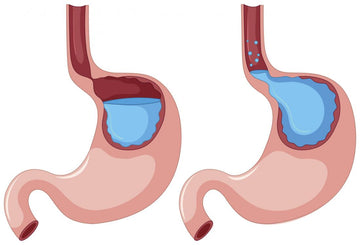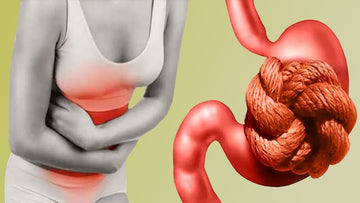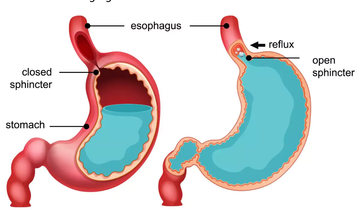
WHAT IS GERD ?
GERD stands for Gastroesophageal Reflux Disease. It's a chronic condition where stomach acid flows back into the esophagus, causing symptoms like heartburn and irritation.
CAUSES OF GERD :
GERD can be caused by a weakened lower esophageal sphincter (LES), which is a ring of muscle that separates the esophagus from the stomach. Factors contributing to this weakening include:
- Hiatal Hernia: When the upper part of the stomach protrudes into the chest through the diaphragm.
- Obesity: Excess weight can put pressure on the abdomen, pushing stomach contents back into the esophagus.
- Pregnancy: Hormonal changes and pressure on the abdomen during pregnancy can lead to GERD.
- Smoking: Smoking weakens the LES and can worsen symptoms.
- Certain Foods and Drinks: Citrus, chocolate, caffeine, spicy or fatty foods can trigger reflux.
- Delayed Stomach Emptying: Conditions like gastroparesis, where the stomach takes longer to empty its contents.
- Connective Tissue Disorders: Conditions affecting connective tissues can weaken the LES.
SYMPTOMS OF GERD :
Common symptoms of GERD include:
- Heartburn: A burning sensation in the chest, often after eating, that may worsen when lying down.
- Regurgitation: Backflow of stomach contents, including acid, into the throat or mouth.
- Chest Pain: Discomfort or pain in the chest, sometimes mistaken for a heart attack.
- Difficulty Swallowing: Sensation of a lump in the throat or difficulty swallowing.
- Chronic Cough: Persistent cough, often worse at night.
- Laryngitis: Inflammation of the voice box, leading to hoarseness or voice changes.
- Wheezing or Asthma-like Symptoms: Aggravation of pre-existing asthma or the development of asthma-like symptoms.
DIAGNOSIS OF GERD :
Common diagnostic methods include:
- Clinical Evaluation
- Endoscopy: This involves using a flexible tube with a camera (endoscope) to examine the esophagus and stomach for signs of inflammation or other abnormalities.
- Esophageal pH Monitoring: This test measures the level of acid in your esophagus over a 24-hour period, helping to identify patterns of acid reflux.
- Esophageal Manometry: This test measures the strength and function of the lower esophageal sphincter and the muscles of the esophagus.
- Barium Swallow: You swallow a chalky liquid containing barium, which helps highlight the esophagus on X-rays, revealing any abnormalities.
- Ambulatory Acid (pH) Probe Test: A device is placed in the esophagus to measure acid levels while you go about your daily activities.
AYURVEDIC TREATMENT OF GERD
Ayurvedic approaches to GERD often involve lifestyle and dietary modifications, along with the use of natural remedies.
- Herbal Remedies: Ayurvedic herbs having digestive and soothing properties like :
- Aloe vera
- Mulethi
- Amla
- Triphala
- Pippali
- Elaichi
- Ash gourd
- Lifestyle Modifications: Practices such as regular exercise, stress management through techniques like yoga and meditation, and maintaining a proper sleep routine is beneficial.
- Ayurvedic formulations :
- Guduchiyadi kshayam
- Drakshadi kshayam
- Chitrakadi vati
- Sutashekhar ras
- Shankh vati
- Mahashankh vati
- Hingwashtak churna
- Avipattikar churna
- Guduchi satva
- Shankh bhasma
- Dietary modifications :
- Avoid Trigger Foods: avoid acidic, spicy, and fatty foods. Common triggers include citrus fruits, tomatoes, chocolate, mint, garlic, onions, and caffeinated or carbonated drinks.
- Smaller, Frequent Meals: Opt for smaller, more frequent meals to reduce stomach pressure and acid reflux.
- Stay Upright After Eating: Don't lie down immediately after eating. Stay upright for at least 2-3 hours to aid digestion.
- Lean Proteins and Low-Fat Options: Choose lean meats and low-fat dairy products to minimize fat intake.
- Limit or Avoid Alcohol and Tobacco
- Moderate on Coffee and Tea: Limit coffee and tea intake, as they relax the lower esophageal sphincter.
- Whole Grains and Fiber: Include whole grains and fiber-rich foods for better digestion.
- Hydration with Water: Stay hydrated with water, but avoid excessive consumption during meals.




